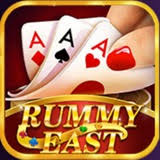East Rummy is an intriguing variant of the classic Rummy card game that has gained popularity due to its distinctive rules and engaging gameplay. Known for its strategic depth and cultural nuances, East Rummy offers a refreshing twist on the traditional Rummy experience. This article delves into the fundamentals of East Rummy, including its rules, gameplay, and why it stands out in the world of card games.
What is East Rummy?
East Rummy is a regional variation of the classic Rummy game, often played in Eastern countries and regions where traditional Rummy has been adapted to fit local preferences and customs. While it retains the core mechanics of Rummy, East Rummy introduces unique rules and strategies that differentiate it from other Rummy variants. The game is typically played with a standard 52-card deck and can accommodate 2 to 6 players.
Basic Rules and Gameplay
- Objective: The primary objective in East Rummy is to form valid sets and runs with the cards in your hand, aiming to minimize the total points of the remaining cards if an opponent goes out. The game is played in multiple rounds, and players accumulate points based on the cards left in their hands.
- Deck and Setup: East Rummy is played with a standard 52-card deck. Depending on the regional variation, Jokers may or may not be used. Each player is dealt a specific number of cards, typically 13, while the remaining cards form the draw pile. One card is placed face-up to start the discard pile.
- Card Values:
- Number Cards (2-10): Face value (2-10 points).
- Face Cards (J, Q, K): 10 points each.
- Aces: Usually worth 15 points if not part of a valid meld; 1 point if used in a meld.
- Jokers (if used): Act as wild cards and can substitute for any card in a meld. Their point value is often zero if part of a valid meld.
- Gameplay:
- Drawing and Discarding: Players take turns drawing a card from either the draw pile or the discard pile and then discarding a card. The goal is to form valid sets (three or four cards of the same rank) and runs (three or more consecutive cards of the same suit).
- Melding: Players can lay down valid melds during their turn. Melds can be created using cards from their hand or by adding to existing melds on the table.
- Going Out: A player can go out when they have melded all their cards except one, which they discard. The round ends, and scores are calculated based on the remaining cards in the opponents’ hands.
- Scoring:
- Points Calculation: At the end of each round, points are calculated based on the cards left in the players’ hands. The goal is to minimize the points of unmelded cards.
- Winning: The game continues over multiple rounds until a player reaches or exceeds a predetermined point total. The player with the lowest score at that point is declared the winner.
Unique Features of East Rummy
- Regional Variations: East Rummy may incorporate regional rules and variations that reflect local preferences. This can include differences in scoring, card values, and gameplay mechanics.
- Strategic Depth: The game offers a rich strategic experience, requiring players to make tactical decisions about which cards to keep, discard, and meld.
- Cultural Elements: East Rummy often includes cultural elements specific to the region where it is played, adding an additional layer of interest and engagement for players familiar with those traditions.
- Adaptability: The game’s rules can be adapted to suit different numbers of players and variations, making it versatile and enjoyable for various groups.
Strategies for Playing East Rummy
- Understand Local Rules: Familiarize yourself with any regional variations and specific rules that apply to East Rummy. This knowledge will help you navigate the game more effectively.
- Form Melds Early: Aim to form valid melds as soon as possible to reduce the points of unmelded cards in your hand. This strategy minimizes the risk of accumulating high points if an opponent goes out.
- Track Opponents’ Moves: Pay attention to the cards drawn and discarded by your opponents. This information can provide insights into their strategies and help you make better decisions.
- Manage Your Hand: Be strategic about the cards you keep and discard. Focus on forming high-value melds and avoid holding onto cards that are unlikely to contribute to your winning hand.
- Use Jokers Wisely: If Jokers are part of the game, use them strategically to complete valuable melds or to substitute for cards that are difficult to obtain.
Why East Rummy is Popular
- Cultural Appeal: The game’s regional variations and cultural elements make it appealing to players who enjoy exploring different card game traditions.
- Strategic Challenge: The blend of traditional Rummy mechanics with unique regional rules offers a challenging and engaging gameplay experience.
- Social Interaction: East Rummy is often played in social settings, providing an opportunity for players to connect and compete in a fun environment.
- Versatility: The game’s adaptability to different numbers of players and variations makes it suitable for various group sizes and settings.
Conclusion
East Rummy offers a unique and engaging twist on the classic Rummy card game, incorporating regional variations and cultural elements that add to its appeal. With its rich strategic depth and versatile gameplay, East Rummy provides a fascinating experience for card game enthusiasts. Whether you’re exploring regional variations or enjoying a traditional game with a unique twist, East Rummy is a compelling choice that promises hours of fun and strategic challenge. So, gather your cards, learn the local rules, and dive into the exciting world of East Rummy.





